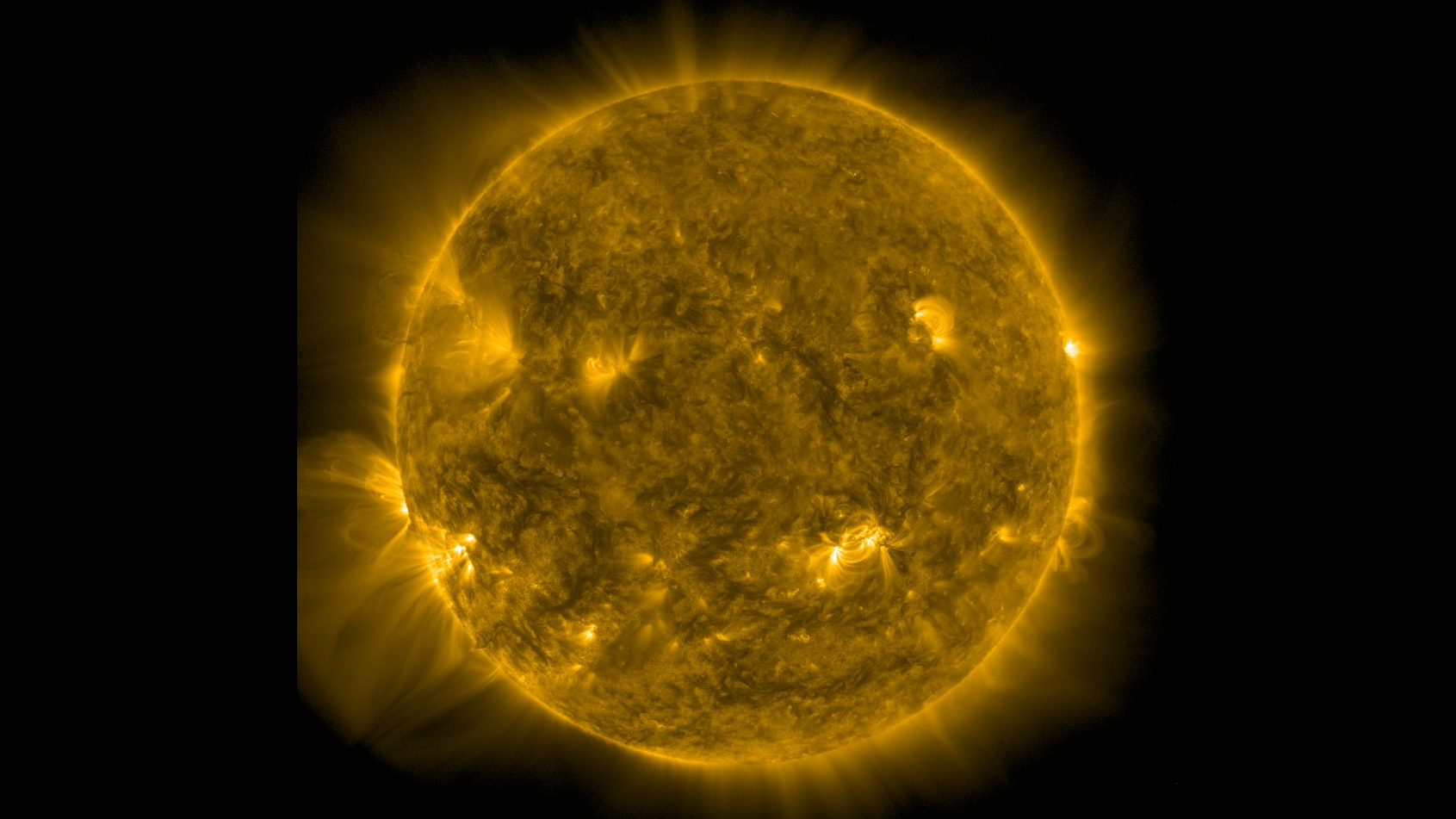Huge, potentially disruptive sunspot will swing round to face Earth this weekend
It could disrupt satellites, cause power outages and lead to problems for airplane navigation systems.

A huge sunspot on the far side of the sun is set to face Earth this weekend, potentially lashing our planet with a geomagnetic storm.
The spot is so big it's changing the way the sun vibrates, according to spaceweather.com. If the dark spot hurls a blob of plasma at Earth, it could disrupt our magnetic field, affecting GPS and communication satellites orbiting close to Earth as well as airplane navigation systems. The National Oceanic and Atmospheric Administration (NOAA) Space Weather Prediction Center issued a forecast for an unsettled geomagnetic field around Earth on Aug. 6 and 7, which could means auroras, though whether it becomes a full-blown solar storm is not yet clear.
Sunspots are dark patches on the surface of the sun that are caused by intense magnetic fields. While this sunspot is on the far side of the sun, scientists detected it by monitoring its effects on the sun’s vibrations.
"The Sun continually vibrates because of convection bubbles hitting the surface,"Dean Pesnell, project scientist of NASA's Solar Dynamics Observatory (SDO), told Live Science in an email. Hot and cool bubbles that continually rise and fall inside the sun move energy around, causing vibration that can be detected by solar observatories like the SDO. The sunspot's strong magnetic field slows these vibrations, which travel through the sun. As a result, observatories like the SDO can monitor sunspots on our host star's far side by the delay in these vibrational waves, despite only being able to see its near side, Pesnell added.
"The larger the sunspot and the stronger the magnetic field the larger this delay will be," Pesnell said.
The telltale vibrational changes showed up in a helioseismic map near the sun's southeastern limb.
This weekend the sunspot will turn to face Earth, which could potentially lead to solar flares — an intense burst of radiation in the sun's atmosphere.
Get the world’s most fascinating discoveries delivered straight to your inbox.
"We will probably see flares when the sunspot rotates into view," Pesnell said.
This solar activity could impact Earth. Solar flares can heat clouds of electrically charged particles from the sun's upper atmosphere to enormous temperatures, which can launch gigantic blobs of plasma at Earth known as, coronal mass ejections (CMEs). "There is a filament heading in the direction of the sunspot and so there might be some coronal mass ejections," Pesnell added.
"Solar flares and CMEs are the major way solar activity affects the Earth," said Pesnell. "From my work, higher levels of solar activity mean increased drag on satellites orbiting close to the Earth — and satellite operators will lose income if that drag de-orbits a working satellite." Other possible effects of more severe "space weather" include the disruption of communications and navigation in the polar regions — often used by intercontinental plane flights — and even power outages on Earth.
The sun has an 11 year cycle during which its activity waxes and wanes, with a distinct "solar maximum" and "solar minimum" when the number of sunspots are most and least numerous, respectively. The sun is now headed for a solar maximum in 2024 or 2025. Lately, the sun has been more active than NASA predicted. CMEs are normal behavior for sunspots at this point of the sunspot cycle, Pesnell said.
Originally published on Live Science.

Jamie Carter is a freelance journalist and regular Live Science contributor based in Cardiff, U.K. He is the author of A Stargazing Program For Beginners and lectures on astronomy and the natural world. Jamie regularly writes for Space.com, TechRadar.com, Forbes Science, BBC Wildlife magazine and Scientific American, and many others. He edits WhenIsTheNextEclipse.com.
 Live Science Plus
Live Science Plus





